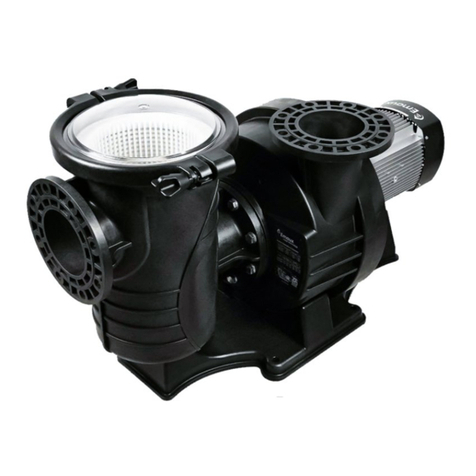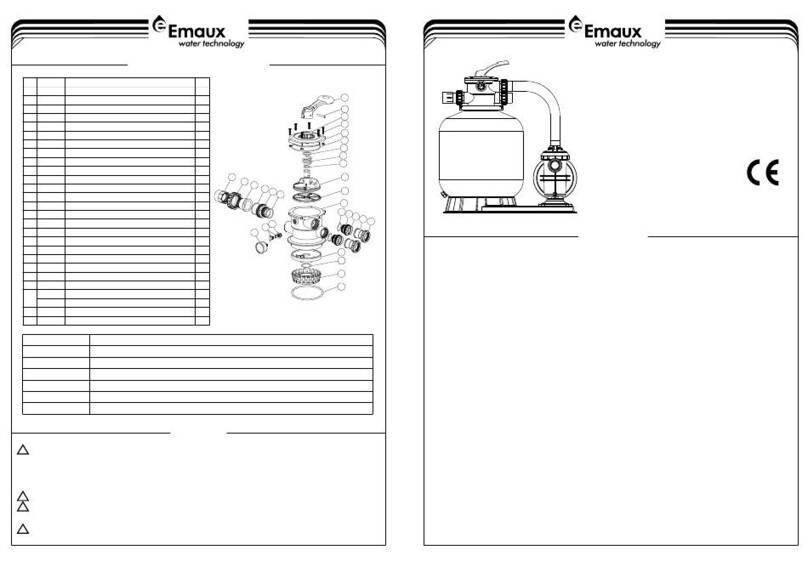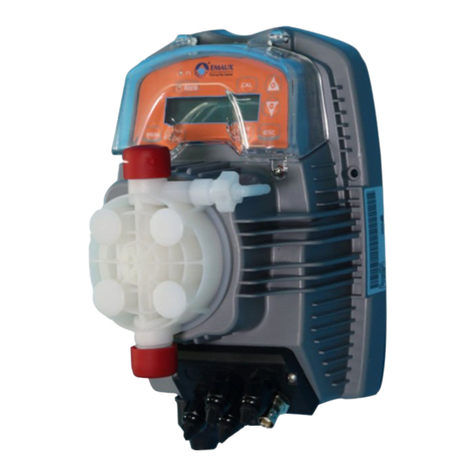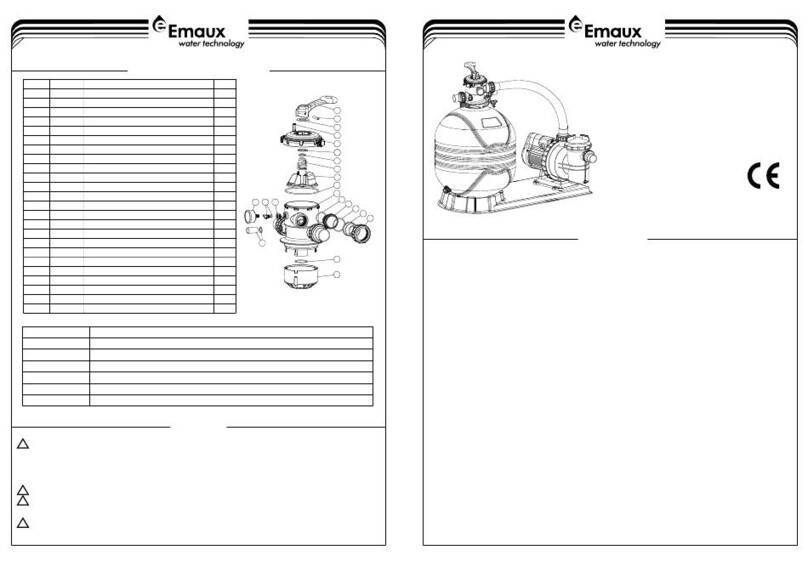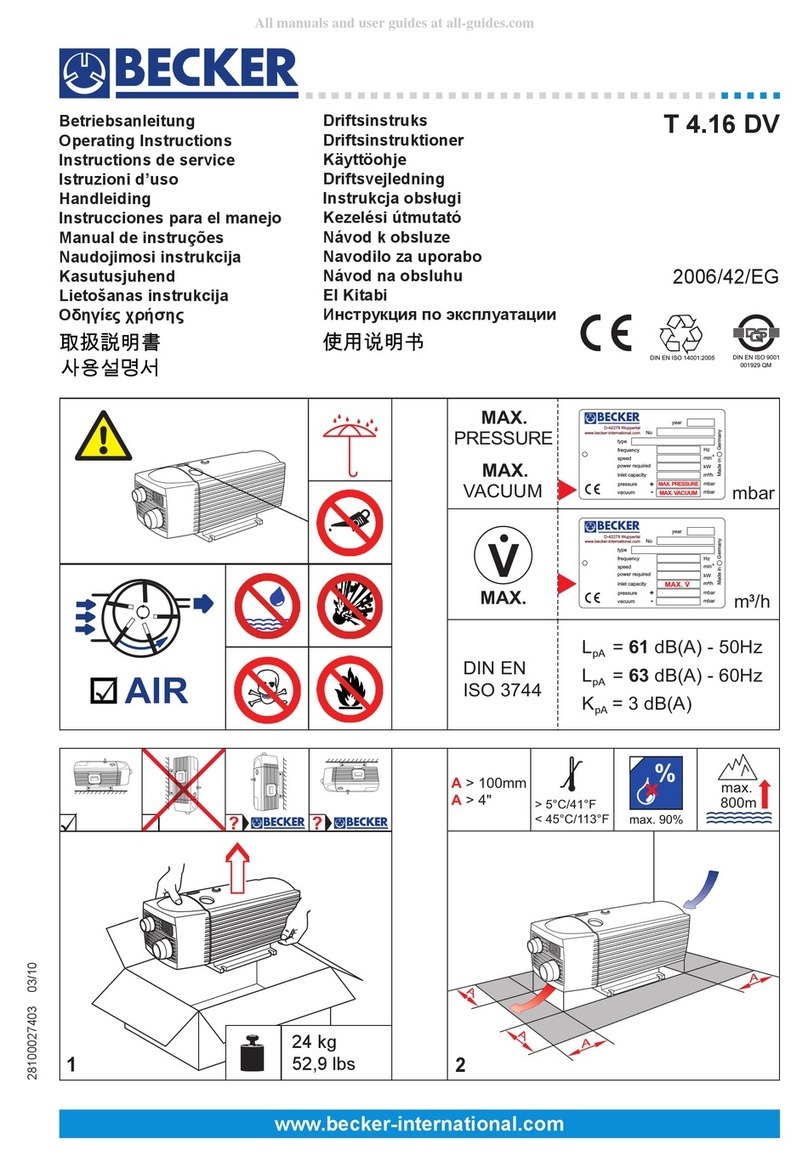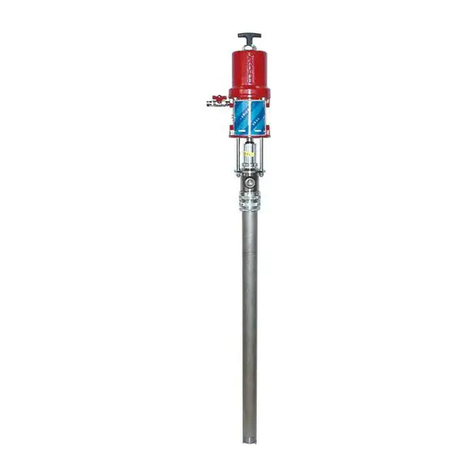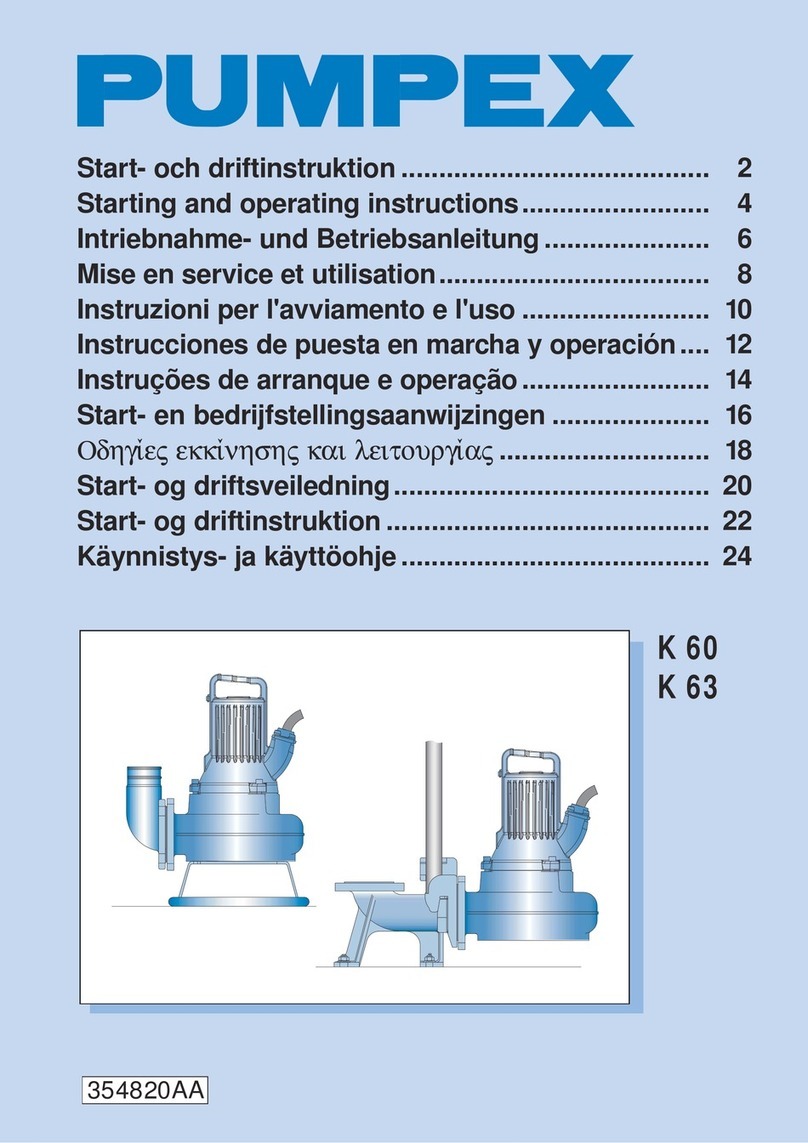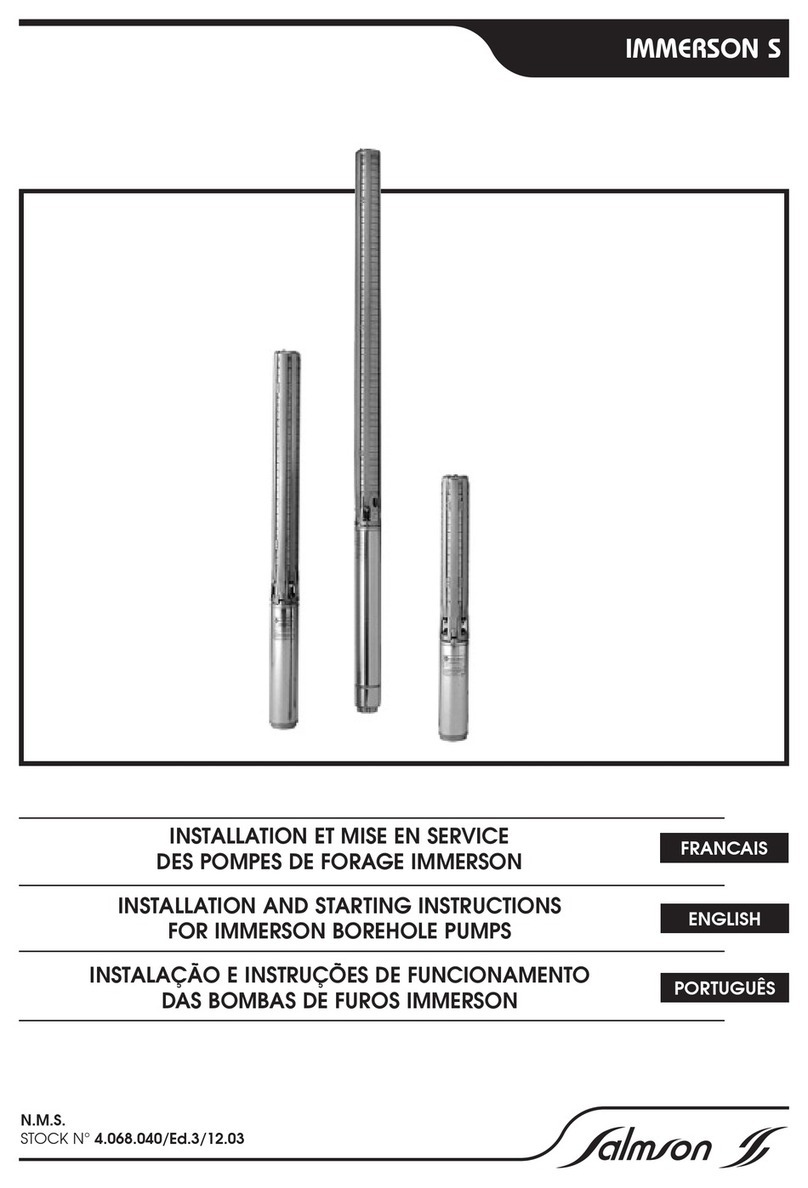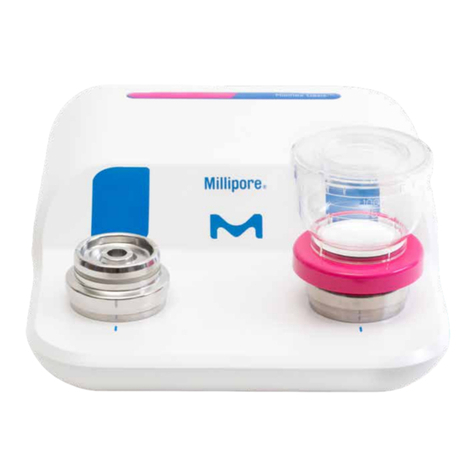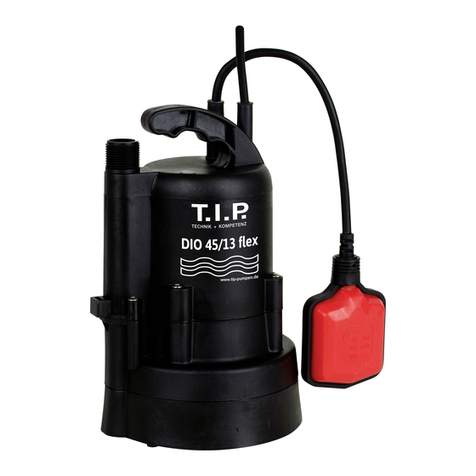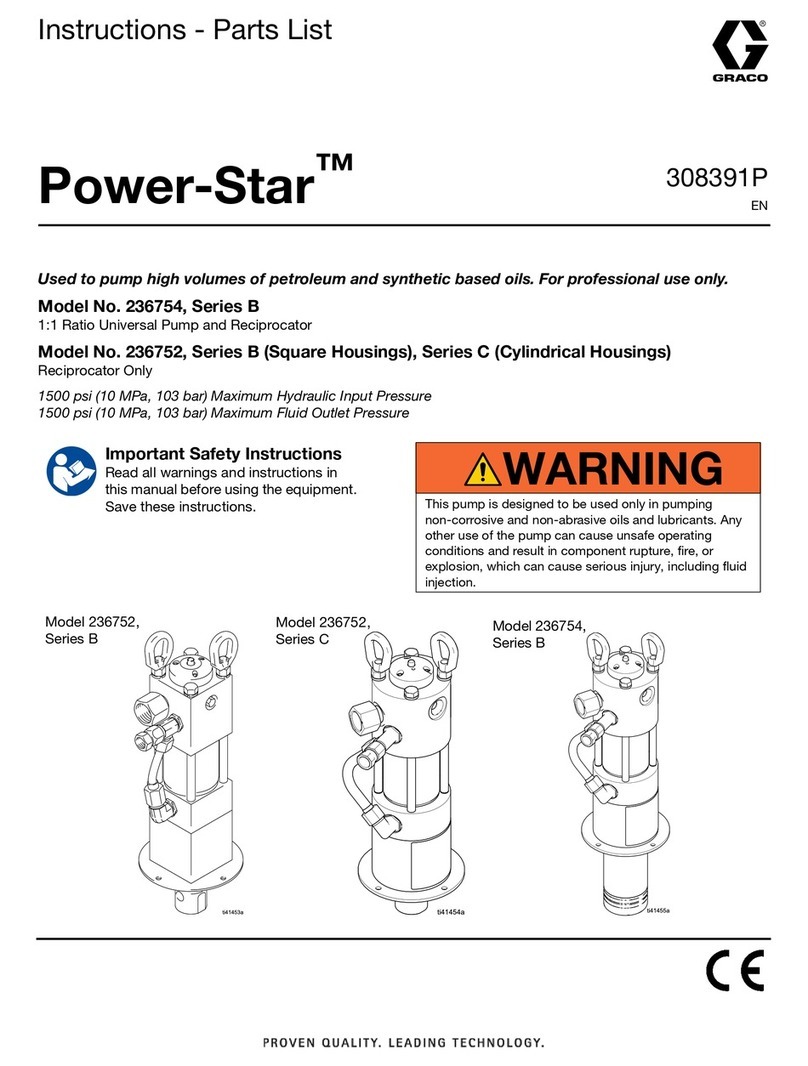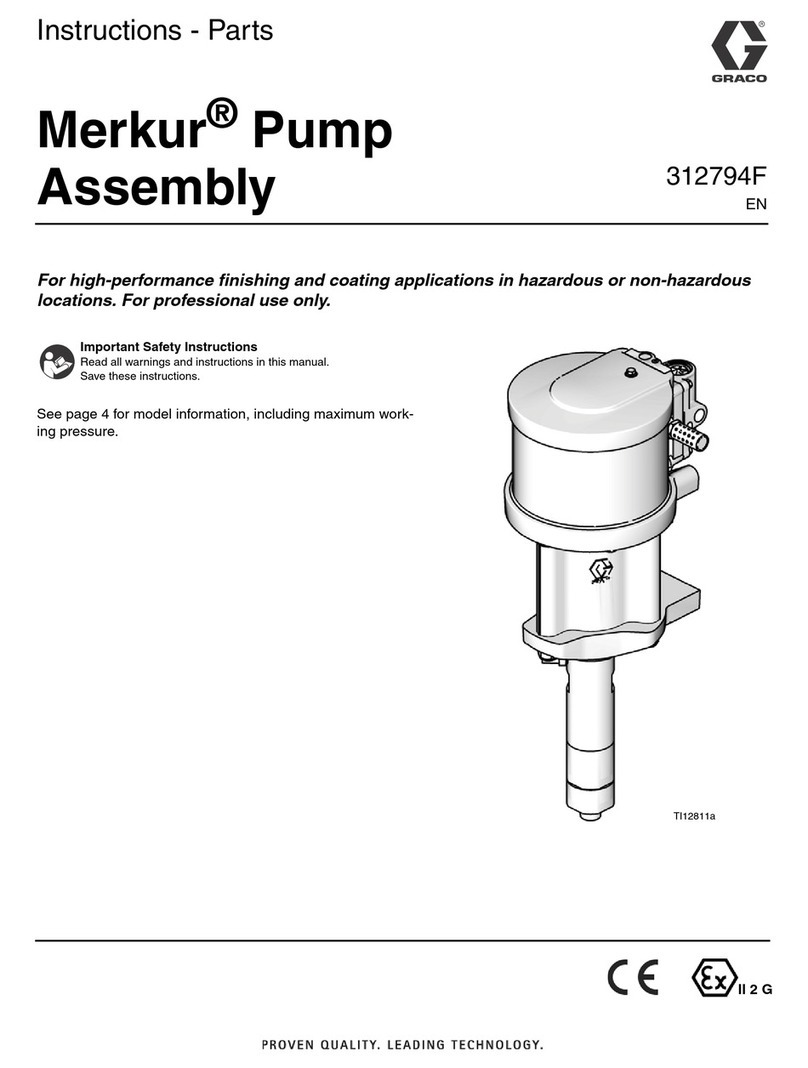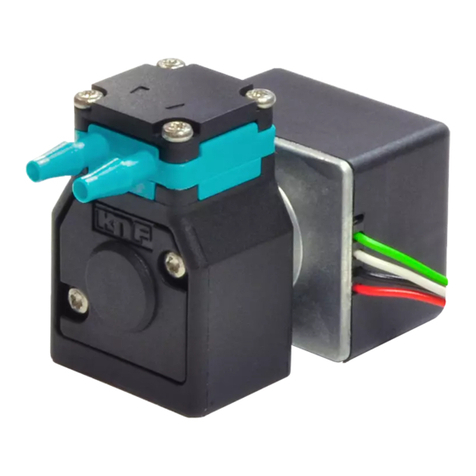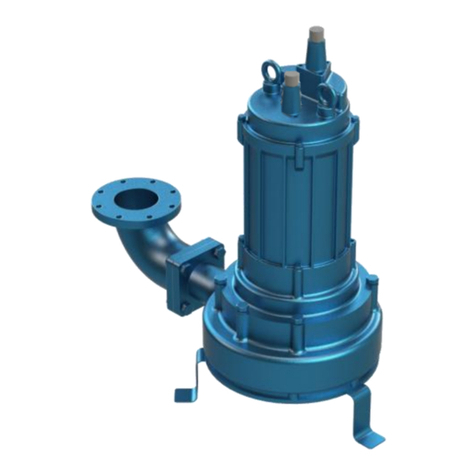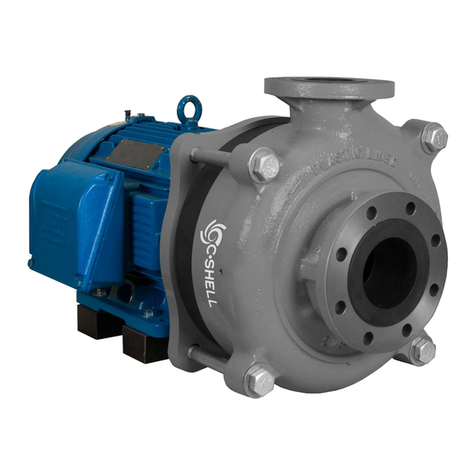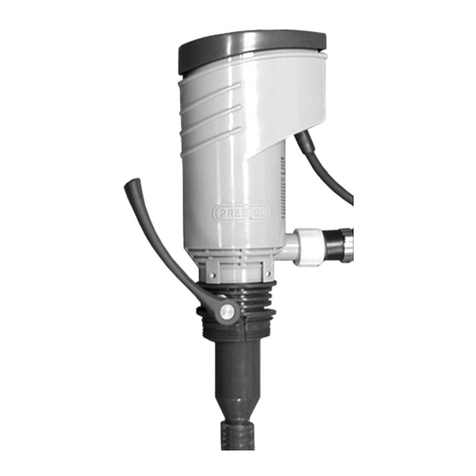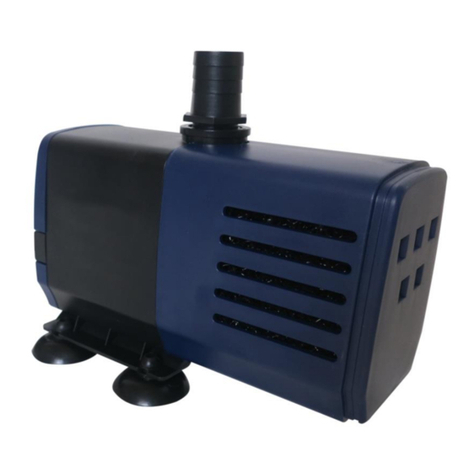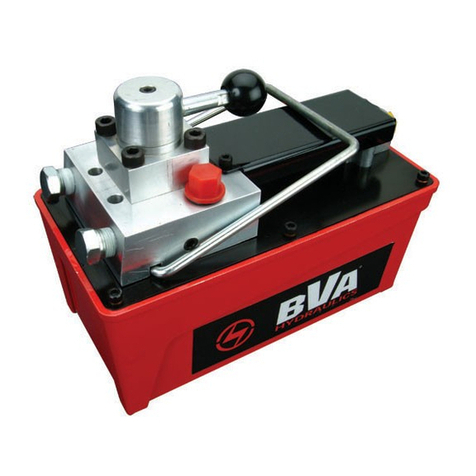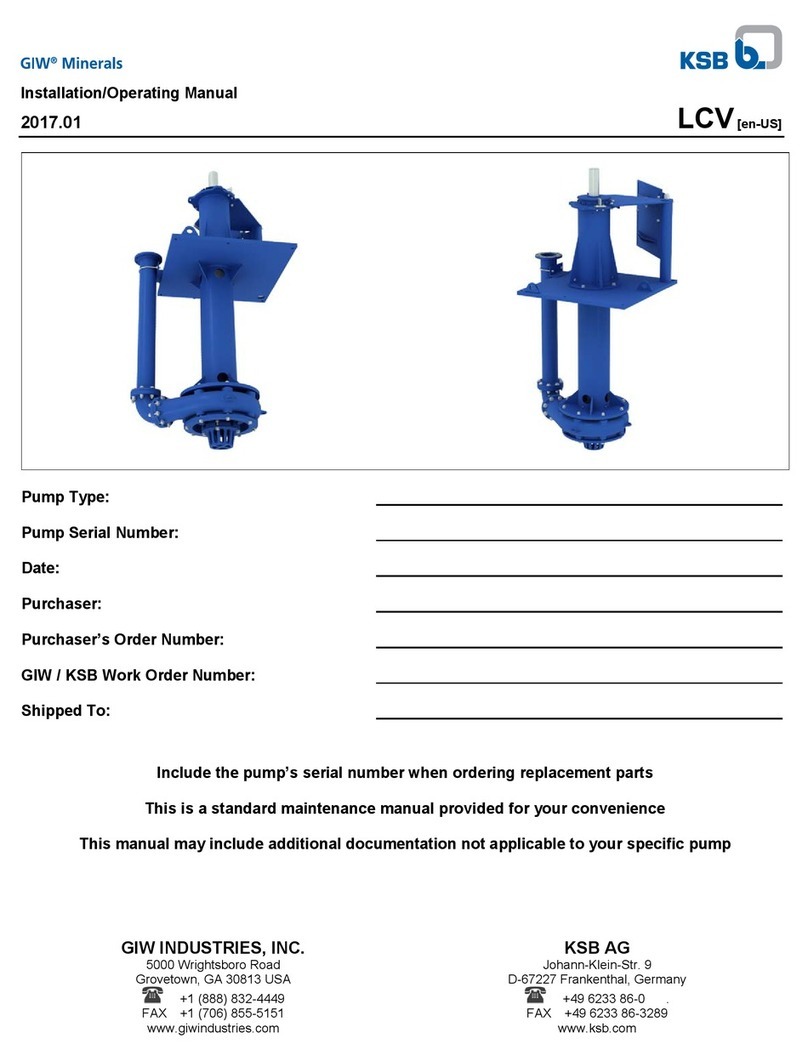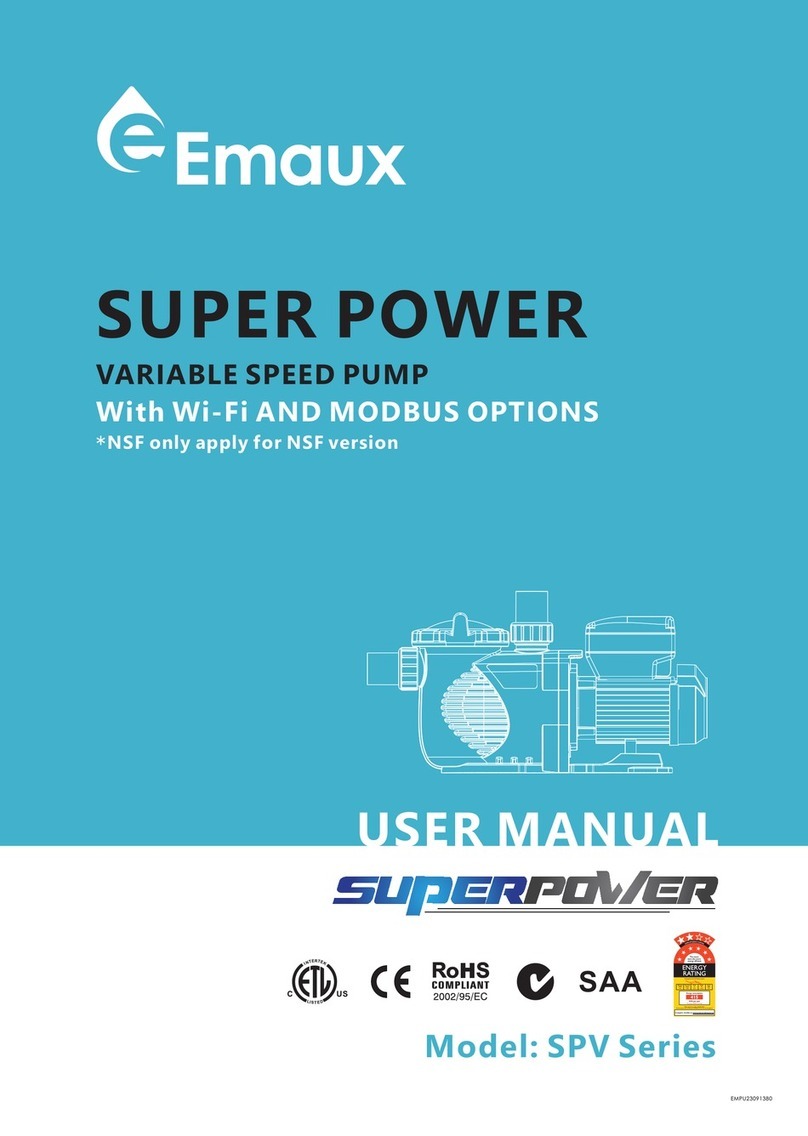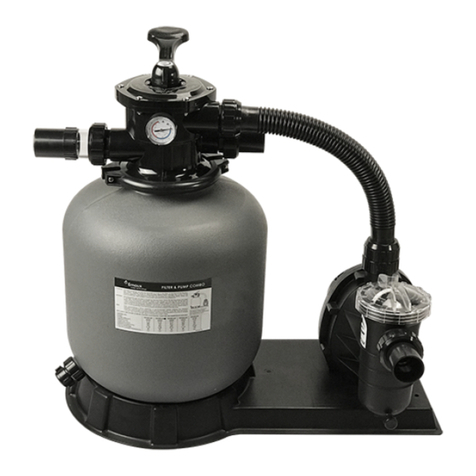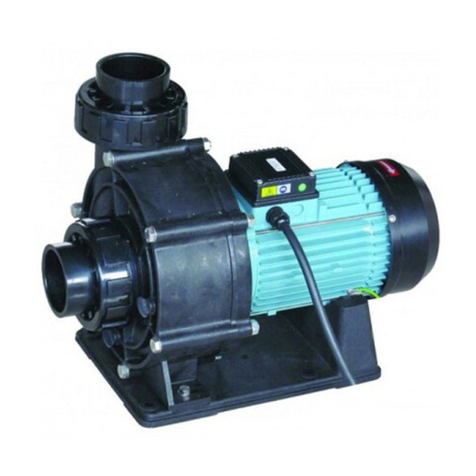Locate pump as close to pool/spa as possible, preferably in a dry, well ventilated area
away from direct sunlight. It should be on a hard, level surface. Give consideration to:
1) Drainage -away from pump
2) Ventilation of pump motor
3) Access for future servicing and winterizing
4) Protection from the elements
Pumps without strainer bodies are designed for flooded suction (all suction fittings and
suction piping below water level) and will not self-prime. Consequently, the pump must be
installed at an elevation that is below water level when pool or spa is filled.
GENERAL PLUMBING
Rigid or flexible PVC pipe can be used. Pipe ends should be clean and free of any flash
caused by the cutting operation. Be sure that the proper solvent is used on type of pipe
specified.
Caution: We recommend that consider climatic conditions when applying adhesives,
make the adhesive action of certain glues less effective. Check the manufacturer's
instructions.
Refer to information on motor nameplate for electrical service data. All motors should
have fused disconnect switch or circuit breaker. Be sure wire size is sufficient for pump hp
and distance from power source. Wiring should be done in accordance with applicable
codes by a competent electrician.
Do not operate pump until it has been primed as water acts to cool and lubricate the seal.
For pumps without strainer bodies and located above water, close suction line valve and
fill pump with water in order to prime. If no flow is observed in five minutes, stop the motor
and re-prime. If the pump fails to operate, check for air leaks. Refer to trouble shooting
section.
Suction pipe should be as large or large than discharge pipe avoid using a suction pipe
smaller than pump connection.
Keep the piping as straight and short as possible, and of suitable size. Avoid connecting an
elbow directly into the pump inlet(use a length of straight pipe to allow a proper entry for
the water).arrange horizontal runs to slope upward to the pump to prevent high spots that
could form air pockets. Support the piping independently so that it places no strain on the
pump. Keep as much of the suction line as possible below the water level to reduce
priming time.
FOR SOLVENT WELD CONNECTION
ELECTRICAL DATA
PUMP START UP
PUMP PLUMBING
TROUBLE SHOOTING
1) Motors are self-lubricating no lubrication required.
2) Shaft seals may become worn and must be replaced if leakage is observed.
NOTE: If the recommendations in the trouble shooting portion of this manual do not solve
your particular problem(s), please contact your local dealer for service.
Refer all service to your local dealer as his knowledge of your equipment makes him the
vest qualified source of information. Order all repair parts through your dealer. Give the
following information when ordering repair parts:
1) Unit nameplate data.
2) Description of part.
SERVICE & REPAIR PARTS
Motor does not start
1) Disconnect switch or circuit breaker in
off position
2) Fuses blown or thermal overload open
3) Locked motor shaft
4) Motor windings burned out
5) Defective starting switch inside sing
phase motor
6) Disconnected or defective wiring
7) Low voltage
Low pump capacity
1) Suction or discharge line partly
plugged
2) Suction or discharge line too small
3) Pump running at reduced speed
4) Impeller clogged
Pump delivers no water
1) Pump is not primed
2) Leakage or air into suction system
3) Impeller clogged
Noisy pump and motor
1) Worn motor bearings
2) Suction line partly plugged
Leakage of water at shaft
Shaft seal requires replacement
High pump pressure
Return lines too small
Pump does not reach full speed
1) Low voltage.
2) Pump connected for wrong voltage.
Motor overheats
1) Low voltage
2) Inadequate ventilation
Air bubbles at inlet fittings
1 Leakage of air into suction line at
connections or valve stem
2 Low water level in drain of bath
)
)
INSTALLATION LOCATION PUMP MAINTENANCE
32



